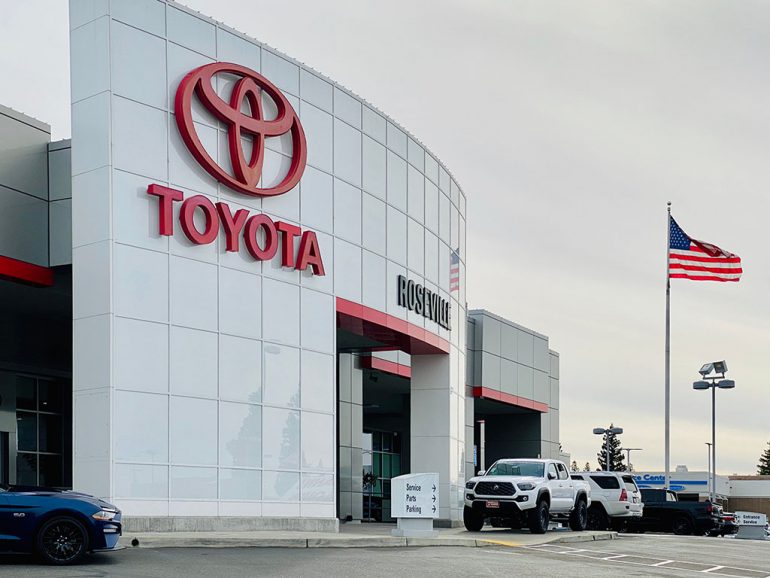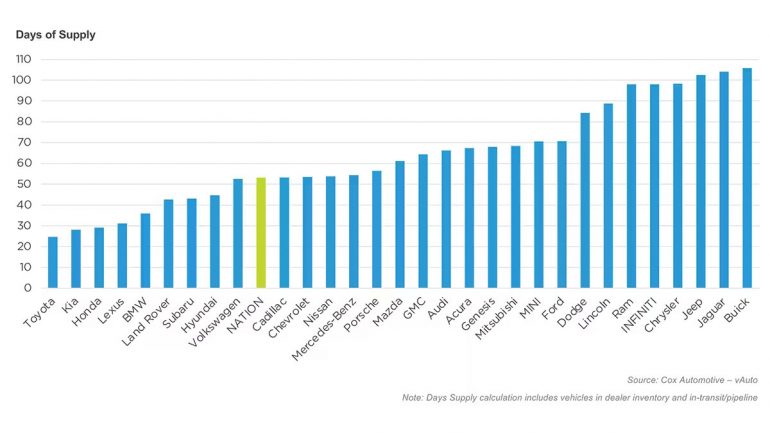
The past few years have seen a steady increase in new car prices, leaving many car shoppers wondering when prices will finally drop. However, recent data suggests that there might be some relief on the horizon. In April 2023, average new car transactions were approximately 27% higher compared to the same period three years ago during the pandemic shutdown. Nevertheless, for the second consecutive month, average transactions have fallen below the manufacturer’s suggested retail price (MSRP), and manufacturer incentives have increased.
While certain brands like Buick, Jaguar, Jeep, and Chrysler are readily available, finding new cars from Toyota, Kia, Honda, or Lexus may prove to be more challenging. Despite the positive sign of average transaction prices dropping below MSRP, it’s important to note that car prices have still increased significantly over the past three years.
Various factors contribute to new car prices. According to Kelley Blue Book data, new car average transaction prices remained stable at $48,275 in April 2023, a decrease of $14 from March. This marks the second time in almost two years that average transactions have fallen below MSRP. Additionally, manufacturer incentives have increased, indicating a potential shift in the market.
However, it’s worth mentioning that average transaction prices are still around 27% higher than they were in April 2020 when the COVID-19 pandemic caused a nationwide shutdown. Luxury vehicle sales have been a significant driver of elevated prices, accounting for approximately 18% of total vehicle sales. In April, the average transaction price for non-luxury vehicles was $44,750, while luxury vehicles commanded an average price of $64,144. The average transaction price for new electric cars in April was $55,089, a decrease of around $10,000 compared to the previous year.
New car prices are influenced by several factors, including inventory availability, manufacturer incentives, dealer discounts, and trade-in vehicle value. These factors have all experienced significant disruptions in recent years. The worldwide microchip shortage has caused inventory levels to plummet, preventing automakers from building cars at the desired pace. Although there have been improvements in inventory, the chip shortage continues to impact certain carmakers and models. Brands like Ford are reevaluating their inventory strategies for the long term, even after the chip shortage is resolved.
Dealerships assess their new car stock using a metric called “days of inventory,” which measures how long it would take them to sell out of new vehicles at the current sales pace if no additional cars were built. Last year, inventories reached a record low of just one week. However, by the end of April 2023, many brands’ inventory levels were 71% higher than the previous year, marking the highest supply level since April 2021. Despite these improvements, some carmakers are still in recovery mode.
Inventory levels vary among different automakers. Brands such as Buick, Jaguar, Jeep, Chrysler, Infiniti, Ram, Lincoln, and Ford currently have ample new vehicle stock, while others like Toyota, Kia, Honda, Lexus, BMW, Land Rover, Subaru, and Hyundai have inventory levels below normal. Overall, the industry’s inventory has improved, reaching 53 days’ worth of vehicles by the end of April, compared to 57 days in March. However, it is still 47% lower than the same period a year ago. The goal is to reach a normal supply of inventory, typically around 60 days’ worth. In 2019, automakers had a 95-day supply of vehicles.

Image Source: Cox Automotive – vAuto
Automakers are increasingly using incentives to attract buyers. In April 2023, carmakers spent an average of 3.6% of the transaction price on incentives, which averaged around $1,700. Luxury vehicle incentives accounted for 7.7% of average transaction prices. These incentives are employed when automakers accumulate an oversupply of cars and need to sell them quickly. In recent years, discounts were scarce due to limited supply. However, with inventory levels rising again, carmakers are offering more incentives to entice buyers. In April, consumers paid $378 less than MSRP, whereas in the previous year, they paid approximately $600 more.
Trade-in value also plays a role in determining prices. The lack of used vehicles in the market has led to an increase in prices. This presents an opportunity for car owners looking to trade in their vehicles, as dealerships are more likely to offer favorable deals for cars that are currently in lower demand. Dealerships are currently oversupplied with relatively expensive used cars, which means that trading in a higher-mileage, older vehicle for a more affordable price range may result in a better trade-in appraisal.
While prices have started to drop for some brands and dealerships, others are still experiencing supply shortages, leading to higher prices. Brands like Honda, Kia, and Toyota have models that are more difficult to find and may require shoppers to pay more. On the other hand, truck manufacturers have an abundant supply of pickups, with plenty of options from Ram, Ford, and Chevy. Some dealerships continue to mark up vehicles due to limited supply, as seen with Kia and Honda in the non-luxury market.
Looking ahead, the timing of a significant drop in new car prices remains uncertain. Factors such as recent Federal Reserve interest rate hikes to control inflation and the resolution of the microchip shortage in 2023 will impact prices. If these trends continue, prices may decrease even for popular models. However, experts cannot pinpoint an exact timeframe for such a change. Shoppers are advised to be flexible and open to alternative options. The availability of inventory varies by market, with cities like Detroit, Houston, and Seattle offering more choices compared to areas like Orlando, Los Angeles, Miami, and Cleveland. While finding a new car at a low price is possible, it may require exploring different brands or considering dealerships in smaller towns with less competition.
Source: Kelley Blue Book

Lloyd Tobias is a seasoned automotive journalist and passionate enthusiast with over 15 years of experience immersed in the world of cars. Whether it’s exploring the latest advancements in automotive technology or keeping a close pulse on breaking industry news, Lloyd brings a sharp perspective and a deep appreciation for all things automotive. His writing blends technical insight with real-world enthusiasm, making his contributions both informative and engaging for readers who share his love for the drive. When he’s not behind the keyboard or under the hood, Lloyd enjoys test driving the newest models and staying ahead of the curve in an ever-evolving automotive landscape.